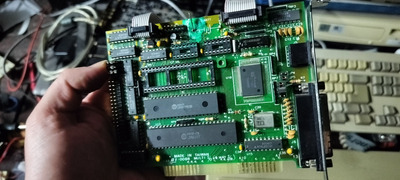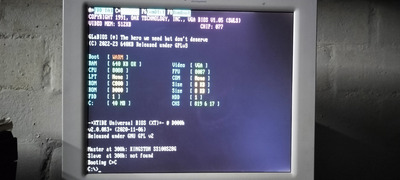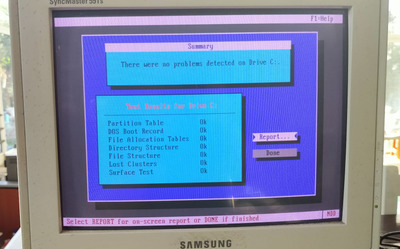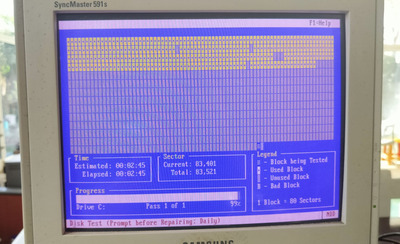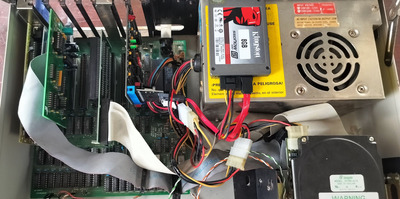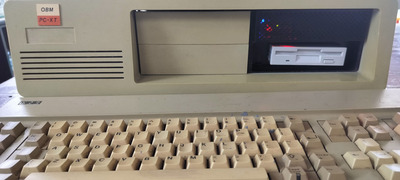So, regarding the turbo button. When the turbo jumper was out yesterday morning, I tried ctrl+alt++, and it did change the cursor to the block but didn't change the speed.
With the jumper pinned, it also changed the cursor but the speed stayed the same, so I'll try the alternative BIOS image that might fix that on this board.
I'm attaching some pictures of this build so far. It still needs a lot of work, lots of old parts were exposed in my garage so there's some reckless paint droplets that I'll get off along with a good scrubbing.
The red LED on the front is power, blue is turbo, the green one is the Seagate's built-in activity LED, and there's a yellow one I had on the XT-IDE for the SSD, although for some reason it didn't flicker, might need some jumper adjustments I still haven't had time to really look at that.
I went with a 1.44MB floppy drive since my 5'1/4" drives seem to all be dying, and it makes interoperability between all my ATs a bit easier (even though I can just format then as 720k in the XT, still plenty for a boot disk). Would be nice if there was a 1.44 BIOS extention available. I'm going to try to get it fitted a bit better with a 3D printed frame so that it looks a bit better.
Also, that floppy drive was a batch of 10 new old stock that I bought last year (R14 is less than a euro, so this was totally worth it). For some reasons the black drives are 5x the price, but I'll order one of these so that my XT facade at least looks a little bit more consistant. Oh yes we call 1.44MB floppy drives "stiffy drives" in South Africa. Just deal with it. 😎
https://www.geewiz.co.za/hard-disk-drives-ssd … rive-beige.html
https://www.geewiz.co.za/hard-disk-drives-ssd … iffy-drive.html
